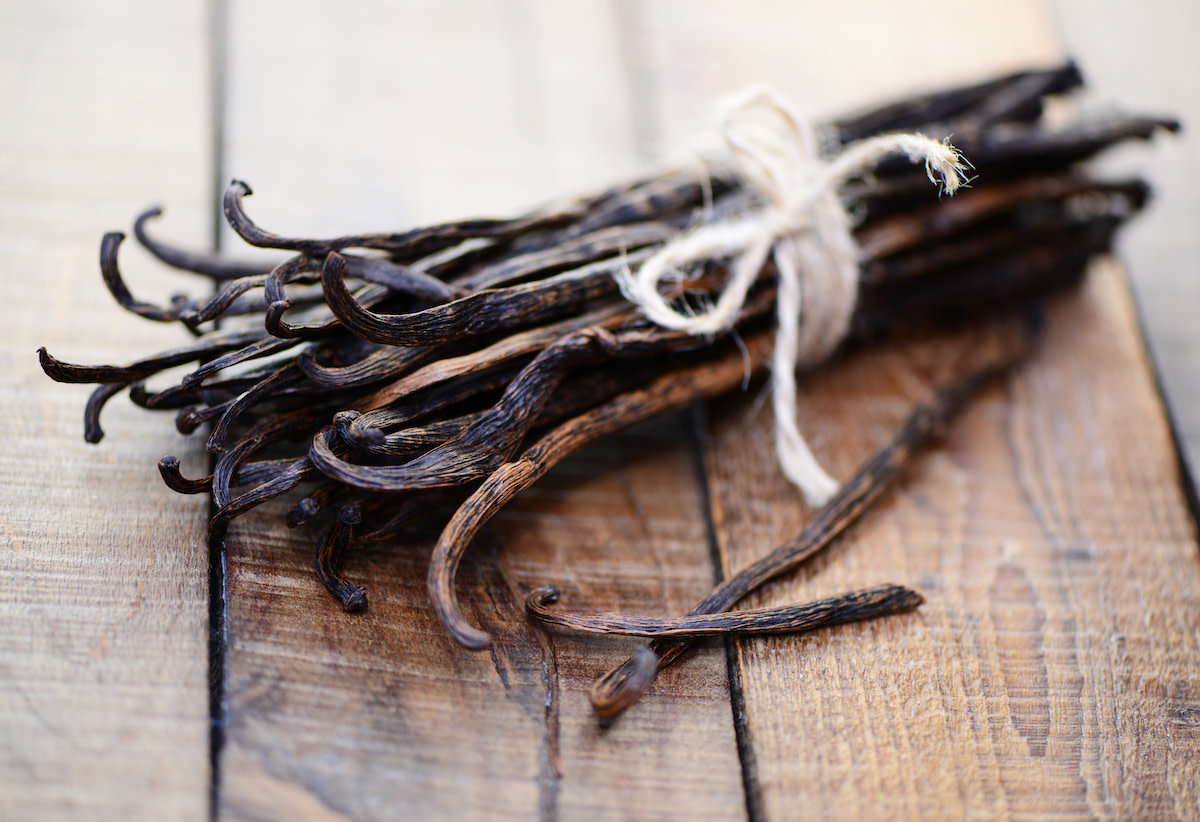How to Use Vanilla: Difference Between Vanilla Extract, Vanilla Beans, and Vanilla Pods
Written by MasterClass
Last updated: Aug 10, 2021 • 4 min read
Beloved by pastry chefs and home cooks alike, vanilla’s intense aroma is completely unique, and best experienced in whole-pod form.
Learn From the Best
What Is a Vanilla Bean?
What we call a vanilla “bean” is actually the pod-shape fruit that grows on a climbing orchid of the genus Vanilla, which includes around 100 species native to tropical Central and northern Southern America. Vanilla orchids are pollinated by hummingbirds and tiny bees only found in vanilla’s native habitat. When grown outside their range, the orchids are painstakingly hand-pollinated by humans, which is part of the reason why vanilla is one of the most expensive flavorings available (topped only by saffron).
The pods themselves are 6 to 12 inches long and contain thousands of tiny seeds that stick to the pod walls. Vanilla flavor, which comes mainly from vanillin (and about 200 other flavor compounds) is bonded to a sugar molecule and only releases its aromas when the pod is damaged. Vanilla flavor comes from both the sticky resin surrounding the seeds and the pod wall.
3 Culinary Varieties of Vanilla Beans
Culinary vanilla comes from three different species: Vanilla planifolia, Vanilla tahitensis, and Vanilla pompona.
- 1. Vanilla planifolia: This variety accounts for most of the world’s vanilla, including bourbon vanilla from Madagascar, which has a rich flavor and the highest vanillin content in the world. Indonesian and Mexican vanilla also come from Vanilla planifolia, but contain less vanillin and are therefore less popular.
- 2. Vanilla tahitensis: The rarer Tahitian vanilla contains much less vanillin than Madagascar vanilla and has a unique floral aroma.
- 3. Vanilla pompona: West Indian vanilla is the least common species and contains the least vanillin of all orchids cultivated for culinary use.
What’s the Difference Between Vanilla Bean Pods, Vanilla Powder, Vanilla Extract, and Vanilla Bean Paste?
- Vanilla Bean Pods: Whole vanilla bean pods are harvested from vanilla orchids while still green and not quite ripe. After harvest, the pods are heated to release their flavor compounds (this also turns them brown). Fresh vanilla beans have no scent; they must be damaged to release their aroma, a process which can take anywhere from a few weeks to several months. Cured vanilla beans are the basis for vanilla powder, vanilla extract, and vanilla bean paste.
- Vanilla Powder (Ground Vanilla): Vanilla powder can refer to either dried vanilla beans that have been ground to a fine, dark brown powder or vanilla-infused maltodextrin, which is white or beige. If you’re looking to substitute vanilla powder for beans, look for the brown stuff and make sure vanilla is the only ingredient listed.
- Vanilla Extract: Vanillin is more soluble in alcohol than water, so extracts are used to create an infusion with a strong vanilla flavor. It’s made by running an alcohol through chopped-up vanilla beans and then aging the mixture. Vanilla extract should be added towards the end of cooking since prolonged heat will cause the flavor compounds to change or evaporate.
- Vanilla Bean Paste: Made from concentrated vanilla extract plus vanilla powder, vanilla bean paste is a convenient substitute for vanilla beans, with more intense vanilla flavor than extract alone.
How to Use Vanilla Beans
Since vanilla flavor comes from both the seeds and the wall of the pod itself, both parts can be used for different types of flavoring. Vanilla bean seeds are a popular addition to French baking as well as in everyday desserts, such as:
- Crème anglaise
- Crème brûlée
- Financiers
- Chocolate chip cookies
- Ice cream
- Buttercream frosting
Don’t throw away the pods after scraping away the seeds—they’re full of vanillin, which can be brought out by simmering them in liquid such as milk, cream, or even jam.
Once you’ve removed the seeds and made a liquid infusion with the pod, there’s still a little life left in leftover vanilla beans. Rinse used pods and dry in a low oven, then add to containers of ingredients or baked goods that could benefit from an infusion of vanilla aroma, so you have vanilla sugar or sea salt on hand while cooking. You can make homemade vanilla extract from leftover vanilla bean pods, but keep in mind that it won’t be as flavorful as versions made from unused pods.
How to Extract Vanilla Seeds From the Pods
To remove the seeds from whole beans, press the bean flat against a cutting board. Use the tip of a paring knife to split the bean, making a slit lengthwise, from tip to tip. Use the back of the paring knife to scrape the seeds from the center of each half. If your recipe calls for sugar, you can use some of the sugar to scrub any remaining vanilla seeds and resin off the pod wall.
How to Store Vanilla Beans
Vanilla beans from the grocery store generally come sealed in plastic, and once you’ve opened the plastic they tend to dry out quickly. Store vanilla beans in an airtight container or zip-top plastic pag in a cool, dark place. Alternatively, halve vanilla beans crosswise and store them in a small jar filled with vodka or rum in the fridge. After two weeks, the pods will be soft, allowing you to squeeze the seeds out without using a knife.
